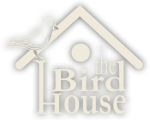It doesn’t get any better than this. This is what Rochesterians live for! In fact, more species are reported in May than in any other month. On average 55 new species arrive, and 238 are seen overall this month. The spring migration reaches its peak by the second weekend in May, nearly 30 species of warblers arrive in the woods, Bobolink arrive in the fields, and shorebirds continue to stop at wet spots in the fields.

Bobolink (male), Burger Park. (© Jay Greenberg)
The crown jewels of the spring – warblers – arrive in force this month. Island Cottage Woods and Firehouse/Church Trail are probably the premier spots for their volume of migrating songbirds, but there are dozens of other excellent locations as well including Durand Eastman Park, Whiting Road, Cobb’s Hill Park, and the East and West spits. There are nearly 30 regularly occurring warblers in our area, and a handful of occasional notables including Prothonotary Warbler, Connecticut Warbler, Cerulean Warbler, and Prairie Warbler although finding these four will take patience and luck. Three of these species breed within an hour or so of Rochester and it may be easier to find one when they are on territories in June, and finding a Connecticut Warbler may be largely serendipitous as some of our long-term birders have yet to see one.
With the warblers come vireos, thrushes, Scarlet Tanager, Rose-breasted Grosbeak, Yellow- and Black-billed Cuckoo, Lincoln’s Sparrow, and, later in the month empidonax flycatchers. The sheer volume of migrating songbirds means some are bound to spill over into your yard, especially if you have trees, shrubs and other natural cover. Put up your hummingbird feeders at the beginning of the month as these tiny gems usually arrive by Mother’s Day.
Vultures, Osprey, Bald Eagle, and Sharp-shinned Hawk continue to fly over in good numbers. Migrating Common Nighthawk will be visible at dusk, especially along the lakeshore. A great vantage point is the hawk watch platform at Braddock Bay, the marina parking lot off Manitou Beach Road, or other similar vantage points along the lakeshore.
The lake will hold Black-bellied Plover on the beaches, and Ruddy Turnstone on the jetties at Charlotte Pier and Irondequoit Bay. Other shorebirds may be seen on exposed mudflats or – perhaps more likely this month – in flooded fields outside of town. May can be a good month for gulls as well. Later in the month, look for Franklin’s and Laughing Gull.
Least Bittern and Sora will be seen in the marshes of Braddock Bay, Salmon Creek, and Irondequoit Bay.

Least Bittern, Florida (© D. Sherony)
High Acres Nature Area is great for Rusty Blackbird, warblers, swallows, shorebirds, and bitterns – it’s tough to call! Go there expecting to find something cool and unusual and you usually will!
The possibilities are endless for some great birding this month!




